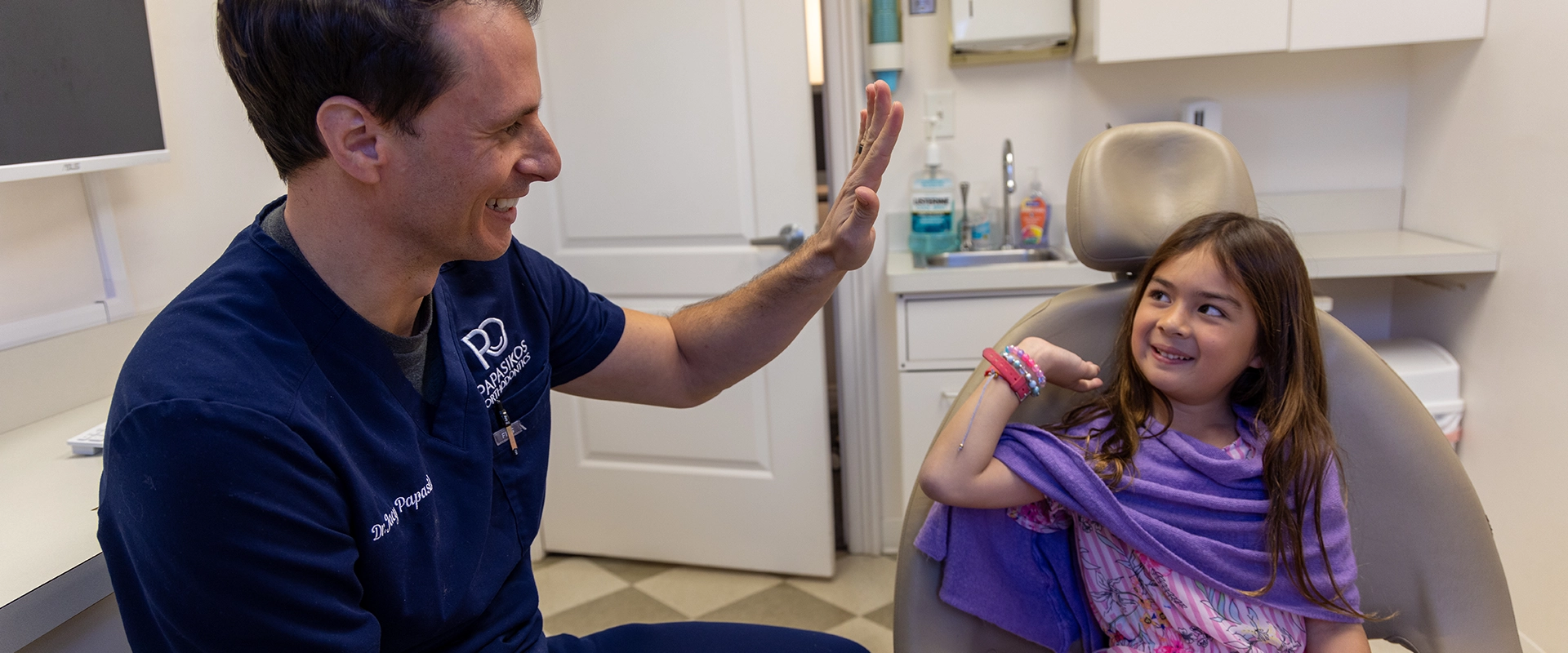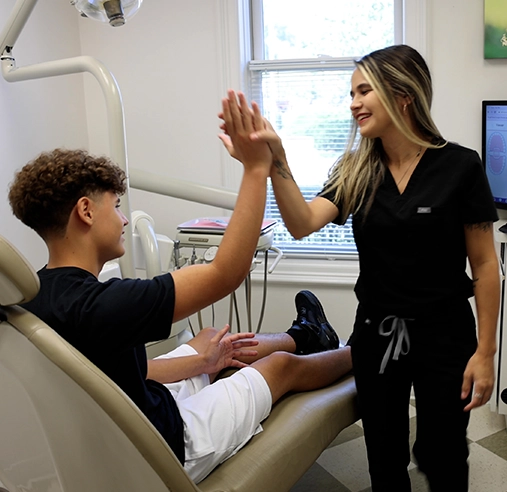
Orthodontics for Children and Teens
At Papasikos Orthodontics, we understand that a healthy, confident smile is essential for children and teens as they grow and develop. Orthodontic Treatment for Children and Teens is designed to address a wide range of orthodontic needs at every stage of your child’s dental development. Whether it’s for early intervention or a more comprehensive treatment plan, we use the latest techniques and technology to ensure your child receives the best care possible. Our team is committed to providing personalized, compassionate treatment that helps young patients achieve their ideal smile while maintaining their confidence throughout the process.


Early Preadolescent Treatment (PHASE I)
The American Association of Orthodontists recommends visiting the orthodontist around age 7. Although most children do not require early interceptive treatment (Phase I), it can prevent more serious conditions from developing as well as the need for costly and painful tooth extractions, jaw surgery, or dental trauma. In some cases, we will be able to achieve results that may not be possible once the face and jaws have finished growing.
Goals of Early Phase I Treatment:
- Correct and guide the growth and development of the jaws
- Regulate the width of the upper and lower jaws
- Create adequate space for future eruption of permanent teeth
- Correct thumb-sucking and other oral habits
When assessing the need for Phase 1 treatment, we only recommend treatment when there is a moderate to severe orthodontic problem that should not wait until later to be treated. We always look for the most conservative treatment options which may include partial braces, palate expanders, or space maintainers. Treatment duration is typically around a year or less.
Comprehensive Adolescent Treatment (PHASE II)
Goals of Comprehensive Phase II Treatment:

Should your child get Braces or Invisalign?
Click the link to read what Dr. Jacy Papasikos has to say in his interview with NewJerseyFamily.com
The following early warning signs usually indicate that your child should have an orthodontic exam:
• Early or late loss of teeth • Speech difficulty
• Difficulty in chewing or biting • Biting the cheek or into the roof of the mouth
• Mouth breathing • Protruding teeth
• Finger-sucking or other oral habits • Teeth that meet in an abnormal way or don’t meet at all
• Crowding, misplaced, or blocked-out teeth • Facial imbalance
• Jaws that shift, make sounds, protrude or retrude
Should your child get Braces or Invisalign?
Click the link to read what Dr. Jacy Papasikos has to say in his interview with NewJerseyFamily.com
The following early warning signs usually indicate that your child should have an orthodontic exam:
-
Early or late loss of teeth
-
Speech difficulty
-
Difficulty in chewing or biting
-
Biting the cheek or the roof of the mouth
-
Mouth breathing
-
Protruding teeth
-
Finger-sucking or other oral habits
-
Teeth that meet in an abnormal way or don’t meet at all
-
Crowding, misplaced, or blocked-out teeth
-
Facial imbalance
-
Jaws that shift, make sounds, protrude, or retrude
